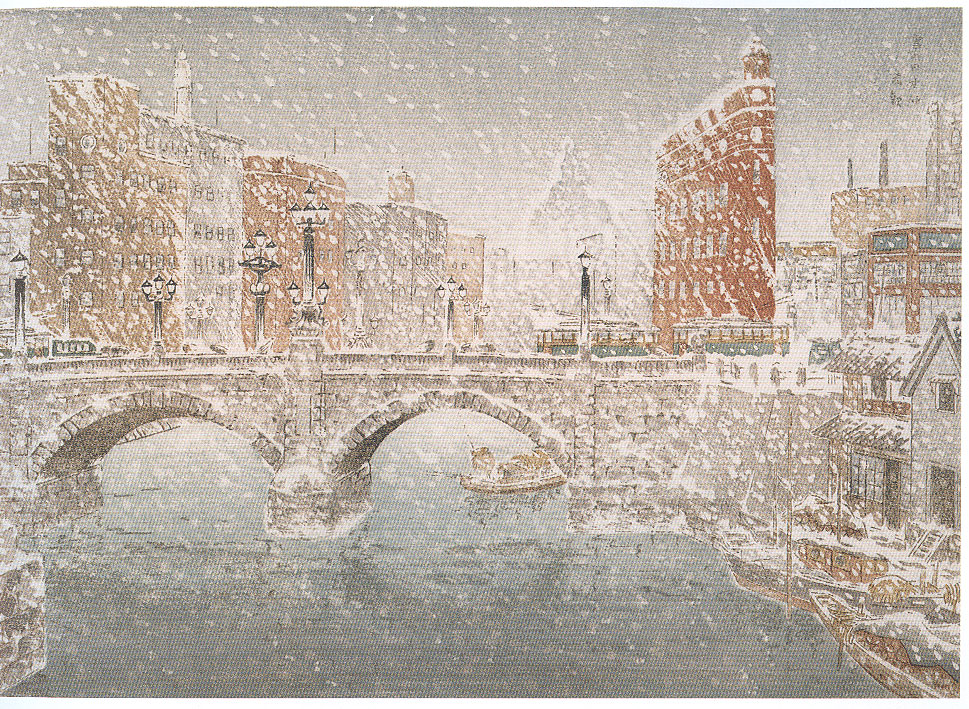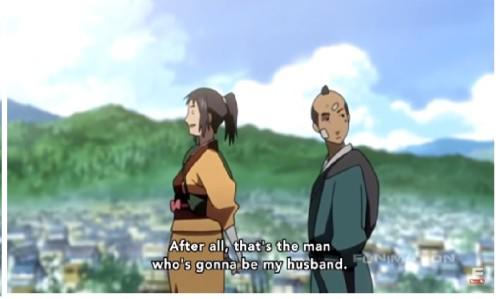What do you think of when you read “anime tourist?” Anime tourist can refer to two quite different meanings. The first, and most obvious for older anime fans and people who aren’t in the fandom, relates to tourism. Namely, it refers to people who visit areas featured in different anime. Many towns and cities in Japan have taken to using anime to promote themselves as a tourist destination. The Anime Tourism Association is an public-private partnership devoted to encouraging people to visit these anime seichi, or “sacred anime locations.” But this isn’t the type of anime tourist I will discuss here.
The second meaning comes from the anime community. It refers to a certain type of person who visits the anime community, so to speak. As with any community-defined slang term, the definition can be a bit of a moving target. As I write this, Anime tourist has a bit of a negative connotation to it.
During the COVID-19 pandemic’s lockdowns and reduced outings, people turned toward streaming services to fill their time. And anime saw a surge in interest as non-anime fans looked for something different to take their minds off of things. This led to newcomers to the fandom–a rather large number of newcomers. The global anime market is projected to grow from around $34 billion to $60 billion by 2030, with the North American market expected to grow the fastest (Grand View Research, 2025). Streaming platforms and partnerships between Japanese anime studios and Western production companies fuel this growth. Merchandise revenue has also grown to make up 31.6% of anime-related revenue in 2024 (Grand View Research, 2025):
This dominance is largely attributed to the increasing popularity of anime in various regions, especially in the U.S., where the demand for merchandise related to popular titles like “Demon Slayer” and “My Hero Academia” is surging.
This influx of new anime watchers and Japanese-American studio partnerships is shifting what type of anime studios produce and what people watch. The rise in shonen’s popularity–or “action and adventure” in marketing research reports–prompted some vocal online anime fans to associate these newcomers, or tourists, with shonen anime.

As for the phrase itself, anime tourist isn’t a new term. The phrase first appears in Google Search Trends in January 2008. It appears in small blips of interesting until mentions of the phrase becomes steadier in 2020. It then soared in July 2025.
The general idea of an anime tourist is that they are an outsider who is visiting. They aren’t a native and won’t stick around, or so the label users assume. As near as I can tell, a blog post written by anime blogger jdrayas in 2024 captures the traits that garner the anime tourist label:
- Watches only popular anime shows, like Naruto, Demon Slayer, and so on.
- Watches anime for the hype or to join the bandwagon.
- Links fan service with sexism and misogyny.
- Polices or berates people who don’t like what they do.
- Disregards the culture.
I don’t know, some of those points describe some of the more vocal long-time fans, especially the policing and berating trait! Some in the community seem to spend more time gatekeeping than they do enjoying anime. Traits 1 and 2 can lead to deeper appreciation for anime. Shonen as long been the most popular category in anime, so I’m uncertain where the worry comes from. But there’s long a bit of elitism in the anime community.

I’ve had the third trait leveled at me for my discussions about fan service and my distaste for how anime uses it. If you aren’t a long-time reader: I dislike fan service because it hurts character development and the narrative. It’s often used as a crutch for weak writing, but I enjoy fan service when it is used well, such as for Marin’s character development in My Dress Up Darling, for satire and commentary as in Kill la Kill, or for otherwise enhancing the narrative. Fan service can be used in sexist and misogynistic ways when it is used poorly. Anyway, long-time fans were “anime tourists” at one point or another. Everyone has to be a beginner. Anime tourists may well grow to like anime beyond a few titles and may want to dive deeper into its categories and genres and time periods, given the chance. It’s better to welcome anime tourists, but then labeling and gatekeeping isn’t anything new.
It’s understandable that you don’t want something you love changing into something you may dislike. And an influx of new people, with different demands on the media and without an understanding of the culture, can feel threatening. When that influx changes the attention of studios and distributors, which is happening, this can change the direction of the medium. Anime, at the end of the day, is a business. It will go where the money is. So the concerns of those who use the label “anime tourist” have validity. Some of anime’s fan service and other tropes have been softened by studios to appeal to a wider audience. For example, Erika Yoshida, the screenwriter for Bocchi the Rock has stated in an interview that she dropped fan-service elements from the manga. She considered the elements “noise” that would prevent a “wider audience from watching it” (Nazru, 2025). This drew criticism not just from fans but from some in the field.
Of course, what Yoshida did isn’t new, nor is it that uncommon. Anime has had censorship and adaption issues when aiming at the global market since at least the 1980s. Likewise, using labels like “anime tourist” to target outsiders and newcomers to the medium and fa ondom isn’t new. The label has changed over the decades. Back then, the main slang word was Wapanese instead of otaku, meaning “white Japanese” or “wannabe Japanese.” While this term was leveled at fans of anime, people like to use othering language to define who is in the out-group and who belongs to the in-group. Anime tourist is a new term for an ancient immaturity.

Anime fandom remains fairly static in its average age, 24.9 years old for online fans and 27.6 years old for con-goers. The true average age for online fans will likely be lower because Reysen’s study (2021) excluded teens. The static age means people age out of the community over time. And this means the anime community has changed over the decades. The community will change as members of the community age out and new people join. Change also happens as mangaka and studios change their stories and target a global audience. I welcome “anime tourists.” Anime is just another way to tell stories. More fans–however casual–brings more income to anime studios and to the manga industry sitting behind anime. More income and a more diverse audience can lead to new stories and characters. While this can make some fans worry about their fandom changing, change is the only constant in life. The same old anime stories get dull. Anime already has a deep back catalog. And, given enough time, the old stories patterns will return and appear new again. Between these two realities, fans who prefer a static fandom and anime selection can retain their own section of the fandom. They shouldn’t be criticized for this desire. Likewise, they shouldn’t criticize those who want anime to evolve.
I find it interesting how some people of the online world attach a sense of identity to entertainment. A differing opinion or taste comes off as an attack on a fan’s sense of self. And this seems to underpin a part of the hoopla some online areas see when tastes about anime differ. My opinion of fan service has made some readers feel personally attacked, judging by some messages I’ve received, because of this conflation of identity. It’s not healthy to ground your identity in anything beyond your character. It’s especially not healthy to attach your sense of self to entertainment.
So here’s the simplest definition:
Anime tourist. n. – a negative slang phrase used within segments of the anime community to label newcomers to anime.
So in the end, the label anime tourist is nothing new. It will eventually be replaced by some new label to separate those who consider themselves “in the know” from everyone else.
References
Google Trends (2025) “Anime Tourist” https://trends.google.com/trends/explore?date=all&geo=US&q=anime%20tourist&hl=en
Grand View Research (2025) Anime Market Size, Share & Trends Analysis Report By Type (T.V., Movie, Video, Internet Distribution, Merchandising, Music, Pachinko, Live Entertainment), By Genre (Action & Adventure, Sci-Fi & Fantasy, Sports), By Region, And Segment Forecasts, 2025 – 2030
https://www.grandviewresearch.com/industry-analysis/anime-market
jdrayas (2024) The Rise of Anime ‘Tourists’: Impact on Fandom Dynamics. https://jdrayas.wordpress.com/2024/09/09/the-rise-of-anime-tourists-impact-on-fandom-dynamics/
Nazru, Ami (2025) Gundam Director Calls Out Anime Censorship on 2022 Sleeper Hit: ‘I Want People to See It All’. CBR. https://www.cbr.com/gundam-director-bocchi-anime-censorship/
Reysen, Stephen, Plante, Courtney, Chadborn, Daniel, Roberts, Sharon, Gerbasi, Kathleen (2021) Transported to Another World: The Psychology of Anime Fans. International Anime Research Project. Commerce Texas.

![The [American] Politicization of Anime dealing iwth the mikadono sisters–yuu](https://www.japanpowered.com/media/images/dealing-iwth-the-mikadono-sisters-yuu-350x230.jpg)




In a broader sense, I suppose it’s easy to view casual observers in pretty much any domain as “tourists”. But I don’t know that there’s necessarily any harm, so long as it’ doesn’t overwhelm what’s being observed. And pejoratives can be applied with a broad paintbrush… “escapist”, “wonk”, “fanatic”, “follower”… I suppose there’s always the risk of some Dunning Kruger aspect; but was something like dropping the fan service from “Bocci the Rock” really a negative, or did it perhaps merely work to broaden access to its message?
The use of Ikue Asazaki’s traditional Amami performance of the Yoisura-Bushi, “Onarigami”, in a final episode of Samurai Champloo, but with a Western piano accompaniment, gave most listeners a special access to something culturally difficult for outsiders to comprehend… even without a knowledge of the Amami language or of traditional Ryukyuan beliefs. Is there nothing of value from an experience one doesn’t fully understand?
youtube[DOT]com/watch?v=-5g5nNQiOKw (replace the “[DOT]”)
I don’t see any harm in tourists remaining tourists. Exposing themselves to different perspectives still enriches. If you haven’t read the manga for any anime title, you won’t know the difference between them or the absence of fan service. Few anime adapt all a manga’s scenes.
“Is there nothing of value from an experience one doesn’t fully understand?”
This is an excellent question that all of us should ask ourselves. The beauty of the performance transcends the language and belief barrier in that song, while understanding the context deepens the story of Samurai Champloo with what it references. Understanding the surface of something can still be beneficial. I consider how many people have a surface-level or somewhat deep understanding of their religion. It makes them better people even if they don’t understand the nuances behind, say, the Exodus and how ideas of Christian salvation link to the symbolism of the Exodus story and how that story, in turn, offers further symbolism about humanity’s enslavement to death. But exposure to the surface symbols can still shape a person’s lens. Being an anime tourist can, at the least, change how people consider animation as a storytelling medium.
Of course, it was a rhetorical question… ne. Still, I’ll admit to having looked up a fair amount of vocabulary used here.
そうだ…またまた忌々しい観光客だ。(ツ)v
Haha, rhetorical, but still a good question!
Another version of your statement: “Get off my lawn, you damn kids!” 😀
A lot of people in Kyoto who’ve been saying, or maybe just thinking that lately. 🤬
Tourist confession that I’ve probably seen five-minutes of Samurai Champloo.
However, the particular piece by Ikue Asazaki is called “おぼくりええうみ”(Obukurue e Umi). The kana leave some interpretation… “To the Great Recurring Sea”?
With words in English (replace the “[DOT]”):
youtube[DOT]com/watch?v=Qk72DRZ4NJg
Very melancholy lament about leaving what little one has to her children. The “lover” in the lyrics is a reference to death.
Good article! It feels like “anime tourist” is another iteration of “filthy casuals” and similar slang. These comparisons have been around as long as I’ve cared about anime and probably well before then. The issue I have with these terms is that they (a) serve as a form of gatekeeping, as you said, and (b) indicate a lack of self-awareness. Every fandom has a level at which the users invest more resources (time, money, emotions) than the average fan would, and that makes us a little “strange” for doing so. Is that strangeness a bad thing? Not if we’re still behaving as civil members of society. (I think the fan-service thing is a Pandora’s Box all on its own precisely because of those “civil society” implications, but you could write an entire blog post on that subject.)
Fandoms of all types are a bit strange when you think about them. Team sports are strange. People will wear body paint, merch, and all the other regalia of their favorite team. But there’s no harm in them as long as they don’t interfere with normal functioning. “Filthy casuals” is a good synonym with how “anime tourist” is being used by some as near as I can tell.
Fan service is complicated with the fandom’s relationship with it against the wider society’s view of it. There’s no way around it: fan service deals with minors in most cases.